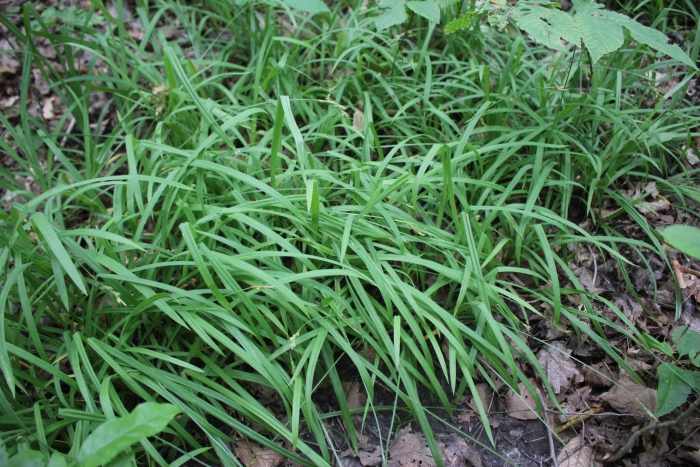Pubescent Sedge
(Carex hirtifolia)
Pubescent Sedge (Carex hirtifolia)
/
/

Quinten Wiegersma
CC BY 4.0
Image By:
Quinten Wiegersma
Recorded By:
Copyright:
CC BY 4.0
Copyright Notice:
Photo by: Quinten Wiegersma | License Type: CC BY 4.0 | License URL: http://creativecommons.org/licenses/by/4.0/ | Rights Holder: Quinten Wiegersma | Publisher: iNaturalist | Date Created: 2020-06-24T12:18:36-07:00 |
















































Estimated Native Range
Summary
Carex hirtifolia, commonly known as Pubescent Sedge, is a deciduous perennial grass native to moist meadows, open woodlands, and along stream banks in the Eastern United States and Canada. It forms loose tufts with a height and width of 0.8-2 feet and 0.8-1 feet, respectively. The plant is characterized by its soft, hairy foliage, which gives it a distinctive texture. The leaves are narrow and arching, and the plant produces inconspicuous greenish-brown flowers in late spring to early summer.
Pubescent Sedge is valued for its ability to thrive in shaded conditions and its adaptability to a range of soil moisture levels, making it suitable for naturalistic plantings and restoration projects. It is often used in rain gardens, as a ground cover in woodland gardens, and for erosion control on banks. While it prefers part shade, it can tolerate full sun in cooler climates if provided with sufficient moisture. Pubescent Sedge is relatively low-maintenance, but it can spread by rhizomes, so it may require management to keep it within bounds. It is not typically afflicted by serious pests or diseases.CC BY-SA 4.0
Pubescent Sedge is valued for its ability to thrive in shaded conditions and its adaptability to a range of soil moisture levels, making it suitable for naturalistic plantings and restoration projects. It is often used in rain gardens, as a ground cover in woodland gardens, and for erosion control on banks. While it prefers part shade, it can tolerate full sun in cooler climates if provided with sufficient moisture. Pubescent Sedge is relatively low-maintenance, but it can spread by rhizomes, so it may require management to keep it within bounds. It is not typically afflicted by serious pests or diseases.CC BY-SA 4.0
Plant Description
- Plant Type: Grass
- Height: 0.8-2 feet
- Width: 0.8-1.3 feet
- Growth Rate: Moderate
- Flower Color: N/A
- Flowering Season: Spring, Summer
- Leaf Retention: Deciduous
Growth Requirements
- Sun: Part Shade
- Water: Medium
- Drainage: Slow, Medium, Fast
Common Uses
Bird Garden, Deer Resistant, Groundcover, Low Maintenance
Natural Habitat
Moist meadows, open woodlands, and along stream banks
Other Names
Common Names:
Scientific Names: , Carex hirtifolia, Carex pubescens, Diemisa pubescens, Edritria pubescens,
GBIF Accepted Name: Carex hirtifolia Mack.